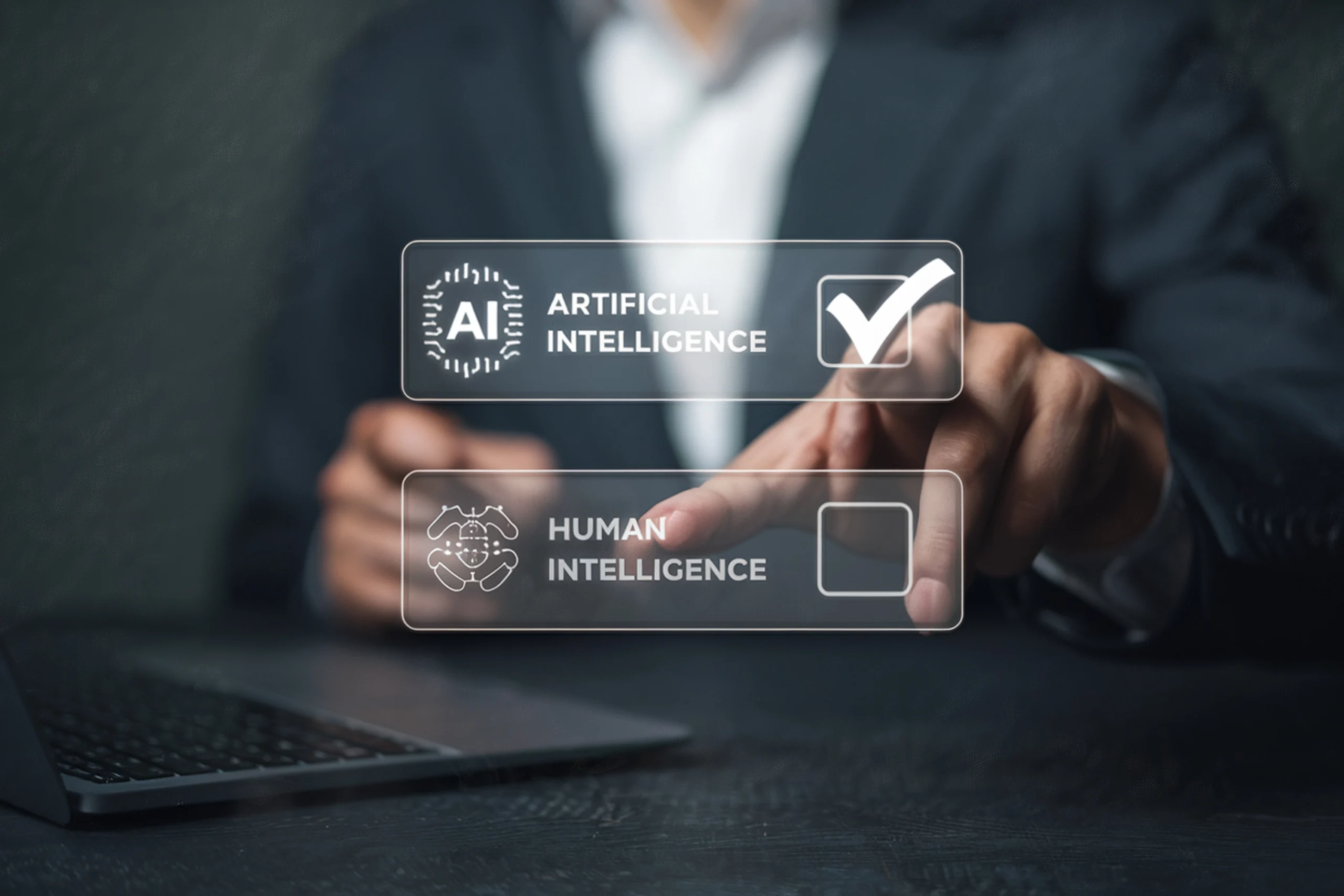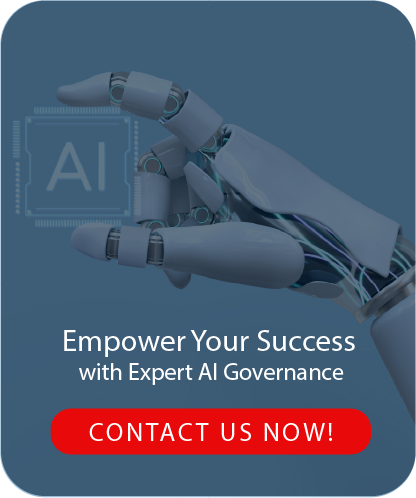
Did you know that 79% of business leaders agree AI adoption is critical, yet 60% lack a proper implementation plan? Without applying proven ai governance best practices, your AI initiatives could become costly liabilities instead of competitive advantages. The difference between AI success and failure often comes down to having the right guardrails in place from day one.
Struggling to implement responsible AI governance in your organization? Contact our expert advisory team to discover how proven governance frameworks can transform your AI strategy from risky experimentation into strategic advantage.
Understanding AI Governance Fundamentals
AI governance represents the structured approach organizations use to ensure their artificial intelligence systems operate safely, ethically, and in compliance with regulations. Think of it as the rulebook that guides how your company develops, deploys, and monitors AI technologies.
Unlike traditional IT governance, AI oversight extends beyond technical considerations. It encompasses ethical dimensions, societal impacts, and regulatory compliance requirements that didn't exist with previous technologies.
Core Components of Effective AI Governance
Transparency and Explainability
Users deserve to understand how AI systems make decisions that affect them. Can your employees explain why your AI tool recommended a specific action? Transparent systems build trust while opaque "black boxes" create suspicion and resistance.
Fairness and Bias Prevention
AI models can inherit prejudices from training data, leading to discriminatory outcomes. Professional governance frameworks include systematic bias testing and mitigation strategies throughout the AI lifecycle.
Privacy and Data Protection
Artificial intelligence systems often process vast amounts of sensitive information. Robust governance ensures personal data receives appropriate protection while supporting legitimate business objectives.
Accountability and Oversight
Clear responsibility chains must exist for AI-driven decisions. Someone needs to answer when things go wrong, and governance structures define exactly who that person is.
Essential AI Governance Best Practices

| Practice Area | Key Actions | Expected Outcomes |
|---|---|---|
| Risk Assessment | Regular audits, impact evaluation | 60% reduction in AI-related incidents |
| Human Oversight | Decision validation, quality control | 40% improvement in accuracy |
| Compliance Monitoring | Regulatory tracking, policy updates | 90% compliance rate maintenance |
| Stakeholder Engagement | Cross-functional teams, external input | 50% faster issue resolution |
Establish Clear Governance Frameworks
Successful organizations don't wing it with AI oversight. They create comprehensive frameworks that address every stage of the AI lifecycle - from initial development through ongoing monitoring and eventual retirement.
The NIST AI Risk Management Framework provides excellent guidance for structuring your approach. It focuses on four core functions: Govern, Map, Measure, and Manage.
Implement Human-Centered Design
Why should humans remain central to AI governance? Because artificial intelligence should enhance human capabilities, not replace human judgment entirely. Human-centered approaches ensure AI systems align with organizational values and societal expectations.
Ready to build a governance framework that actually works? Schedule a strategic consultation to explore how expert guidance can accelerate your responsible AI implementation.
Create Cross-Functional Teams
AI governance isn't just a technology problem - it's an organizational challenge. Effective teams include representatives from legal, compliance, ethics, engineering, and business units. This diversity prevents blind spots that single-department approaches often miss.
Monitor Continuously, Not Periodically
AI systems evolve after deployment. They learn from new data, adapt to changing conditions, and potentially develop unexpected behaviors. One-time assessments aren't sufficient; continuous monitoring catches problems before they cause harm.
Common AI Governance Challenges and Solutions
Rapid Technology Development
AI advances faster than most governance processes can keep pace. The solution? Build flexible frameworks that adapt to technological changes rather than rigid rules that become obsolete quickly.
Regulatory Uncertainty
Different jurisdictions take varying approaches to AI regulation. Organizations operating globally must navigate complex, sometimes conflicting requirements. Stay ahead by adopting the highest standards rather than minimum compliance.
Technical Complexity
Many business leaders struggle to understand AI technical details well enough to govern effectively. Bridge this gap through education programs and simplified reporting that translates technical metrics into business language.
Resource Constraints
How can smaller organizations implement comprehensive governance without massive budgets? Start with high-risk, high-impact AI applications rather than trying to govern everything at once. Focus resources where they'll have the greatest protective effect.
Implementation Strategies That Work
Phase 1: Assessment and Planning (4-6 weeks)
Begin by cataloging existing AI systems and evaluating current governance capabilities. This baseline assessment identifies gaps and prioritizes improvement efforts.
Phase 2: Framework Development (6-8 weeks)
Design governance structures tailored to your organization's specific needs, risk tolerance, and regulatory environment. Generic templates rarely work without customization.
Phase 3: Pilot Implementation (8-12 weeks)
Test governance processes with limited-scope AI projects before rolling out enterprise-wide. Pilots reveal practical challenges that theoretical planning might miss.
Phase 4: Scale and Optimize (Ongoing)
Expand successful governance practices across the organization while continuously refining processes based on experience and changing requirements.
Key Stakeholder Roles in AI Governance

Executive Leadership
CEOs and board members set the tone for responsible AI adoption. They allocate resources, approve policies, and demonstrate organizational commitment to ethical practices.
Chief Data Officers
CDOs often lead AI governance initiatives, bridging technical and business perspectives. They coordinate between different departments and ensure alignment with broader data strategy.
Legal and Compliance Teams
These professionals navigate regulatory requirements and assess legal risks associated with AI deployments. Their input prevents costly violations and reputational damage.
Technical Teams
Data scientists and engineers implement governance requirements in actual AI systems. They translate policy decisions into technical controls and monitoring capabilities.
Measuring AI Governance Success
Quantitative Metrics
- Bias Detection Rates: How often does testing identify unfair outcomes?
- Compliance Score: What percentage of AI systems meet governance standards?
- Incident Frequency: How many AI-related problems occur over time?
- Audit Results: Do external assessments validate governance effectiveness?
Qualitative Indicators
- Stakeholder Confidence: Do employees and customers trust your AI systems?
- Decision Quality: Are AI-supported choices producing better outcomes?
- Innovation Pace: Does governance enable or hinder AI advancement?
Building Sustainable AI Governance Culture
Training and Education Programs
What happens when employees don't understand governance requirements? They make mistakes that put the organization at risk. Comprehensive training ensures everyone understands their role in responsible AI practices.
Regular Policy Updates
AI governance isn't a "set it and forget it" activity. Policies must evolve alongside technology, regulations, and organizational needs. Schedule regular reviews to keep frameworks current.
Incident Response Procedures
Despite best efforts, problems will occur. Effective governance includes rapid response protocols that minimize damage and extract lessons for future improvement.
External Collaboration
No organization exists in isolation. Industry associations, regulatory bodies, and academic institutions offer valuable insights for improving governance practices.
Transform your AI initiatives with expert governance guidance. Connect with our advisory specialists to begin building sustainable, responsible AI practices that protect your organization while enabling innovation.
Your Path to Responsible AI Leadership
Implementing effective AI governance isn't optional anymore - it's a business necessity. Organizations that get it right will gain competitive advantages while those that don't face significant risks including regulatory penalties, reputational damage, and operational failures.
The best time to establish proper governance was before deploying your first AI system. The second-best time is right now. Don't wait for problems to force your hand.
Start with clear frameworks, engage diverse stakeholders, monitor continuously, and adapt quickly. These practices will help you harness AI's tremendous potential while avoiding the pitfalls that trap unprepared organizations.
Remember: responsible AI governance enables innovation rather than constraining it. When stakeholders trust your systems, when regulators approve your approaches, and when customers feel confident in your decisions, AI becomes a powerful tool for sustainable growth.







